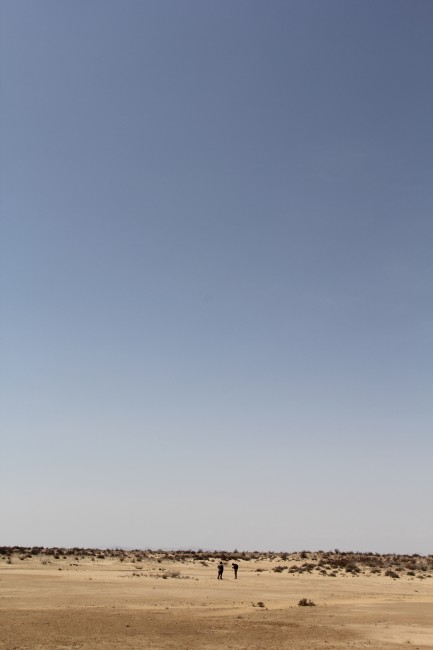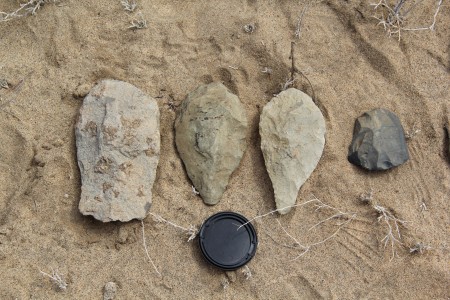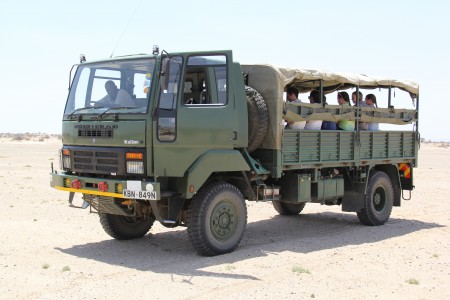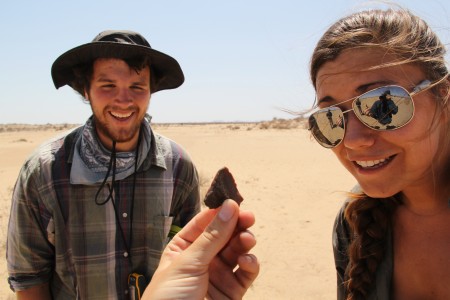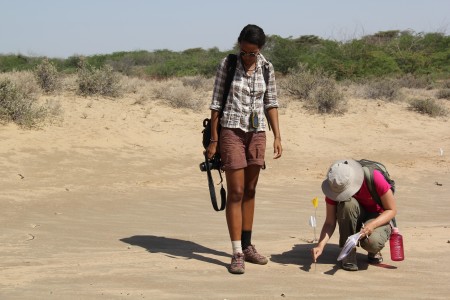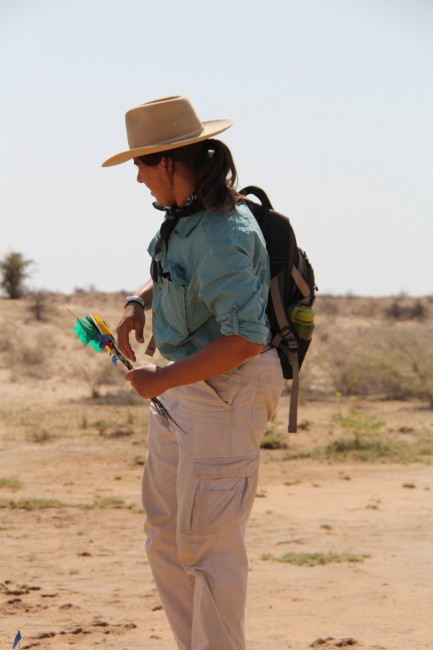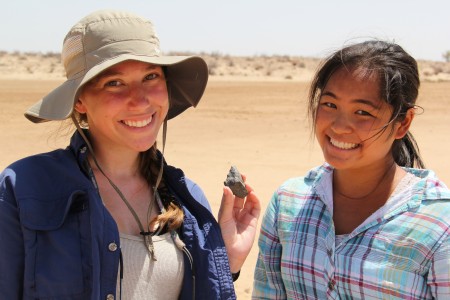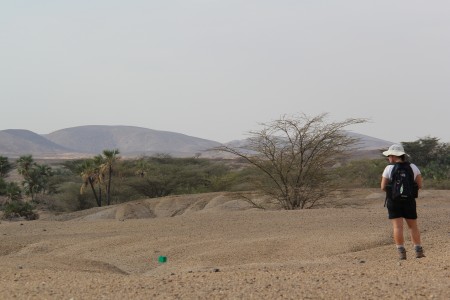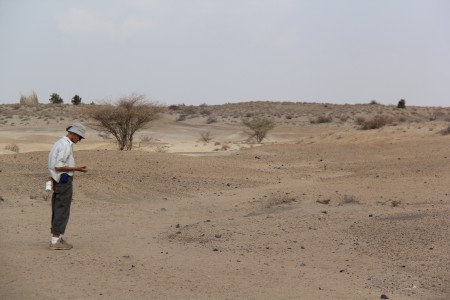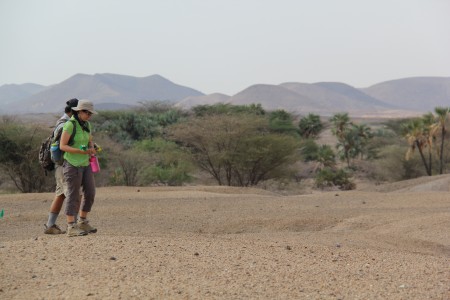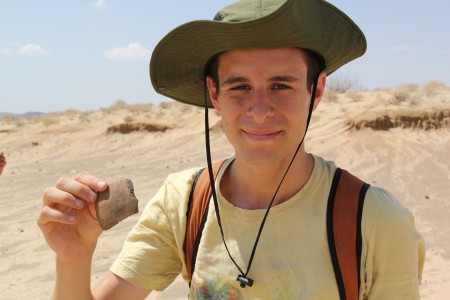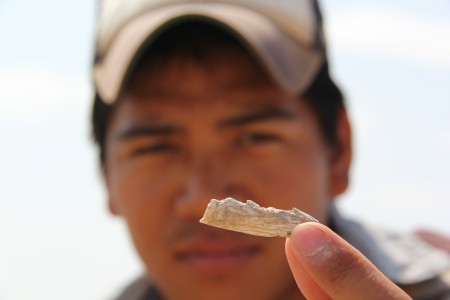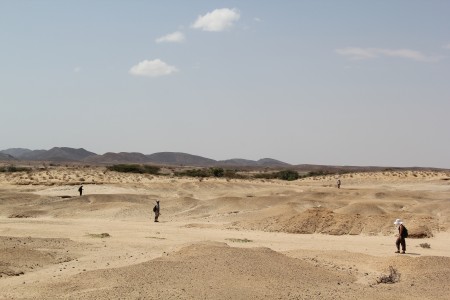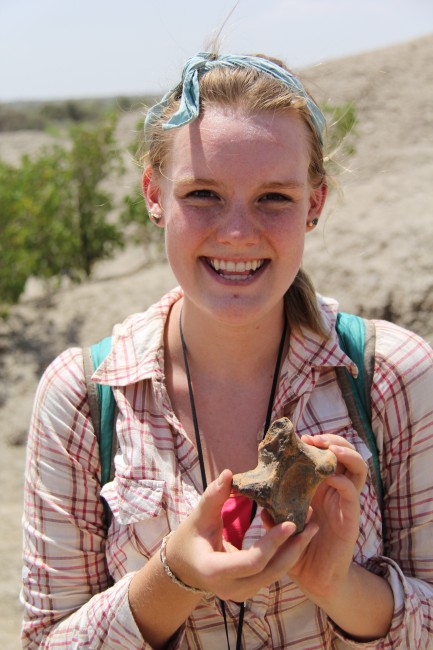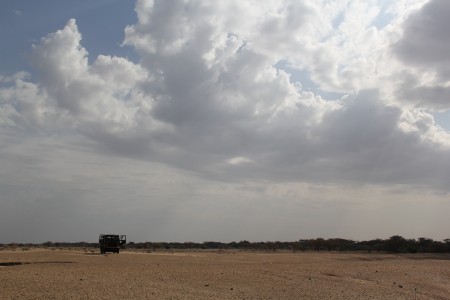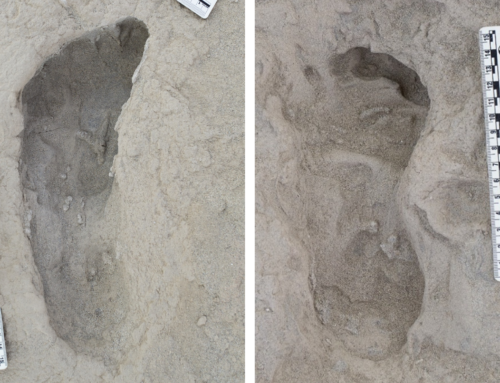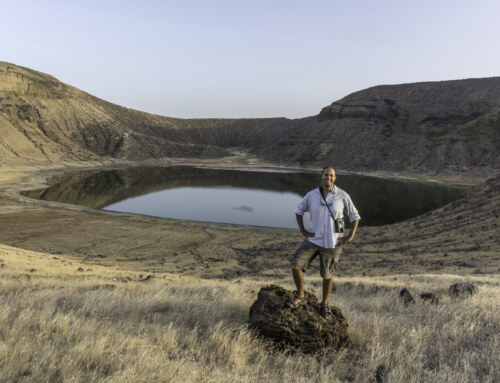Where people go, they leave their trash. Since the Turkana Basin has been home to people for millions of years, there’s a lot of trash for archaeologists to pick up. The classic image of archaeology is the studious excavator sweating with trowel in hand in a meter-by-meter square trying to figure out how a piece of broken crockery goes back together, long after the person who made it and used it tossed it into the trash heap. We’ll get there.
But before the squares can be marked off and the holes dug to find precious ancient junk, you need to know where to dig, and to figure out where to dig, you need to do a lot of walking. If you have a mining bent, this is called “prospecting” and if you have an archaeological bent, this is called “surveying.”
In Ecology and Geology we were taught how to walk with our faces to the ground, searching for insects or cross-bedding. Now we’re looking for artifacts. After learning about the main stone tool industries from Dr. Alison Brooks: the basic flaking methods of the Oldowan with simple, ragged rock that got the job done for a million years, the massive, Acheulean with large flakes worked into large “tools” such as the hand ax (neither consistently the size of your hand nor an ax), the refined prepared cores of the Lavallois where blades and small flakes indicate more coordination and refined knapping techniques, and finally the modern tool kit with small flakes of obsidian and quartz “microliths” that were hafted to form complex, multibladed tools.
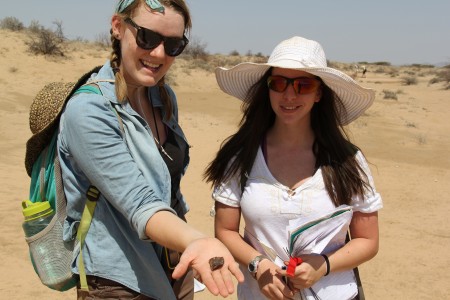
Natalie and Rachel exhibit their favorite find: a large reworked flake of chert, a type of rock not found very close to the site. Someone carried the material from a ways off and dropped it off on the ancient lake’s beach.
Of course, none of these technologies existed in a vacuum. A simple flake of basalt will never go out of fashion, especially when there’s a tasty meal to be butchered as we demonstrated with our goat roast. So, with the names and shapes of each technology in mind, and the approximate age of each type of tool making in our memories from lecture, we were let lose at Ainyangyang, the perennial locality for the field school to explore to try to sort out the archaeological story of a place we know has artifacts but doesn’t have a firm range of occupation dates.
For Ecology we visited Ainyangyang for the insects that call the occasionally lush, internally drained lake home. For Geology we visited Ainyangyang for the lake deposits and dunes as a microcosm for the lake sediments laid across the basin by the ancient fluctuations of Lake Turkana. Now we were back with Dr. Brooks to examine the leavings of thousands of generations of people who have found the occasionally filled lake a useful place to stop off for game and for their herds.
Armed with fistfuls of small survey flags, pairs of students moved out away from the truck, flagging artifacts along their survey path. Careful notes were taken as we took account of the types of artifacts we found and what they were made of. Beautiful, carefully worked blades of chert and obsidian suggested a more recent occupation of the area, while large flakes of basalt worked to a ragged point suggested the more ancient Lavallois.
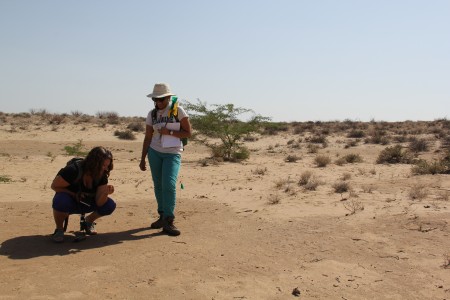
Eve and Rosie mark their first find on their Ainyangyang archaeology transect. Find it. Flag it. Dig it? Maybe not for this little flake…
After walking their transects, the ground was peppered with flags, revealing most of the material seemed to be eroding from below sand dunes above the cracked silt and clay of the lake bed. If we were to set up with our trowels and squares, the hard sandstones would be the place to begin. There were people here making meticulous use of rare stones that hold a sharp edge and they were here a while.
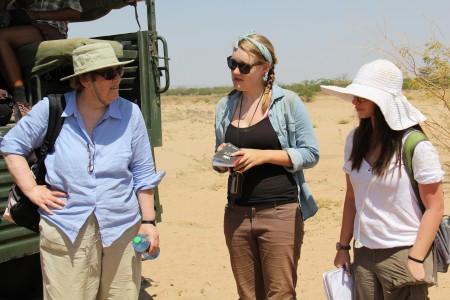
Natalie and Rachel report on the results of their transect across the Ainyangyang depression to Dr. Alison Brooks. There’s a lot of material across this lake bed…
Later in the week we took a step back in time to an Acheulean site near Napadet Hills where we went for a fun, exhausting hike our first weekend in the Turkana Basin. At the foot of the low, rolling hills are a series of gullies littered with stone flakes representing millions of years of technical and cultural innovation. The site was discovered by a Stony Brook archaeologist, but hasn’t been extensively surveyed. There’s so much rock to look at that a site known to have artifacts will go years without a good examination.
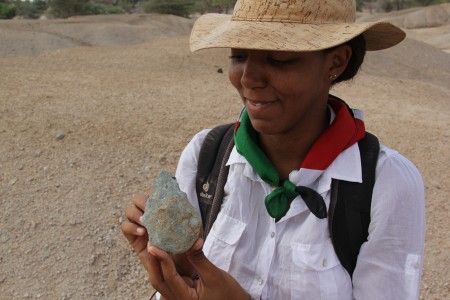
Ana poses with a newly discovered bifacial hand ax. These artifacts are found from Africa to Asia. Some people see them as “swiss army knives,” tools that could be used to scrape, smash, cut, and grind. Others think they had some symbolic significance. Still others think they were used like boomarangs.
Along with the delicate little flakes, ostrich egg shell beads, and bladelets of the later stone age, we found older rocks with the calling card of the Acheulean: hand axes. The symmetrical, tear-drop shaped tools were nestled into rocks with large cleaver stones. Also at the site the teeth of pigs and antelope were eroding from the sandstone close to carefully worked fishing harpoons.
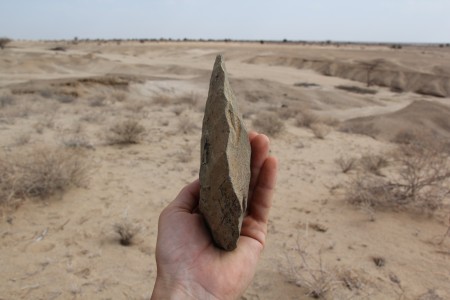
A lateral view of an Acheulean hand axe. The careful attention to symmetrical edges and thickness indicates an ever-evolving technical and aesthetic sophistication in our earliest Homo ancestors.
Again the outcrop was blanketed with little survey flags revealing the lower horizons that would likely produce the Pleistocene Acheulean material and the higher horizons recording the complex innovations of fully modern humans. With everyone’s eye trained to look for small glimmering flakes, large basalt cores, and pottery fragments, it was time to survey a site then actually set up our squares and see what might still be locked in the ground. It was time for us to turn our attention to Kangatotha…

